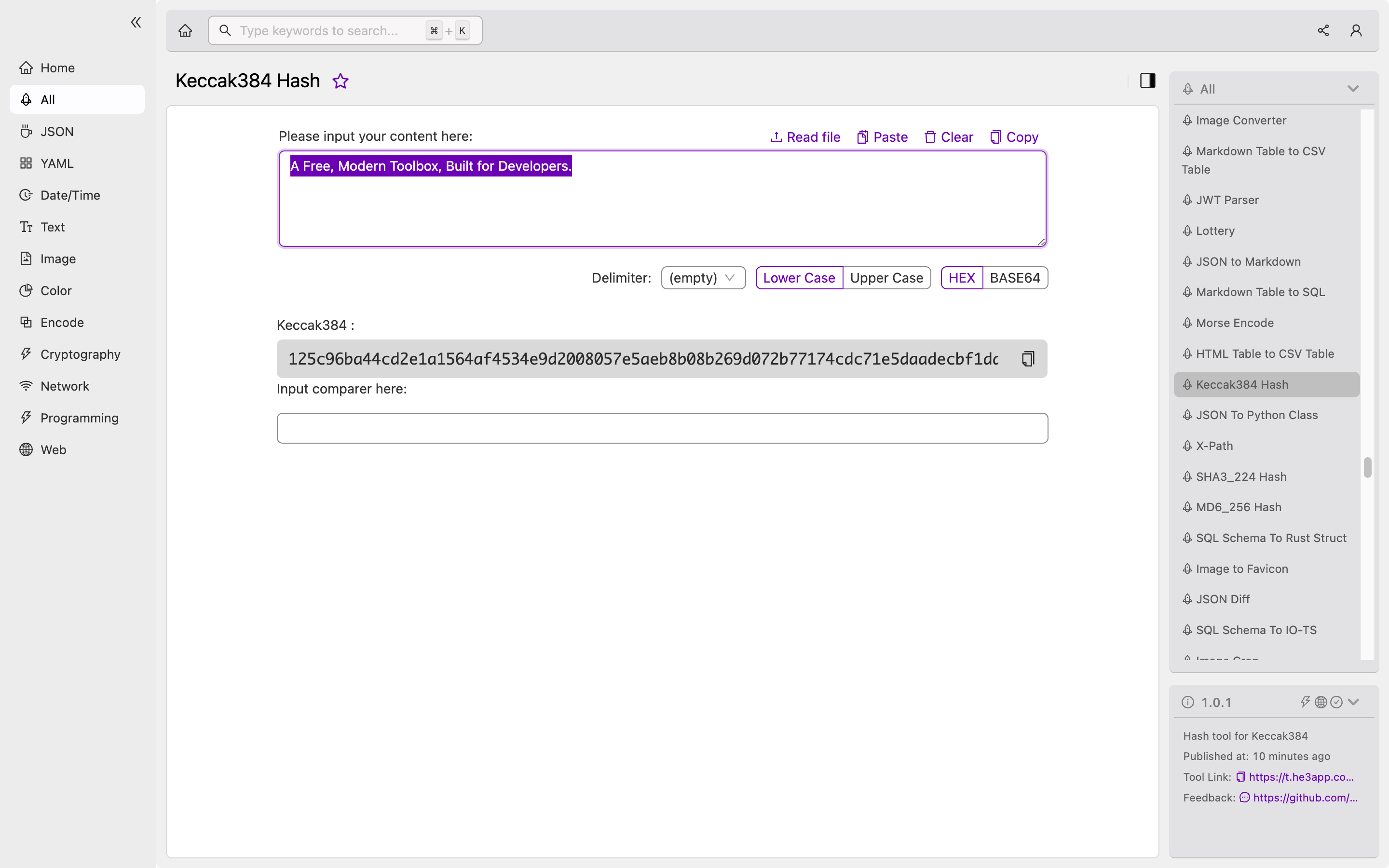Introduction
Keccak384 Hash is a cryptographic hash function that was introduced in 2008 by Guido Bertoni, Joan Daemen, Michaël Peeters, and Gilles Van Assche. It is a member of the Keccak family of hash functions and was selected as the winner of the NIST hash function competition in 2012. In this article, we’ll explain what Keccak384 Hash is, how it works, and how developers can use it in their projects.
How It Works
Keccak384 Hash uses a sponge construction, which means that it absorbs input data and squeezes it through a fixed output length. The algorithm takes the input data and divides it into equal-sized blocks. Each block is then processed by a set of permutation functions that manipulate the data in a specific way. This process is repeated until all the blocks have been processed, and then the final output is generated.
Scenarios for Developers
Keccak384 Hash can be used by developers in a wide range of scenarios, including:
- User password encryption
- Digital signature verification
- Integrity checks for data transmission
- Data authentication
- Blockchain transactions
Key Features
Keccak384 Hash has several key features that make it a secure and reliable hashing algorithm. These include:
- Resistance to collision attacks
- High-quality diffusion properties
- Resistance to side-channel attacks
- Wide range of output sizes
Sample Code
Here is an example Python code for hashing a message using Keccak384 Hash:
from hashlib import sha3_384
message = b"Hello, world!"
hash_value = sha3_384(message).hexdigest()
print(hash_value) # prints "887DDEB7CDCCB652E06A45A2B2E89F2BAA25A7854409E23E90CDE015EB578EDEA2A1B0EBC1B7AF75F3DEB9D9E9D2510"Misconceptions and FAQs
Some common misconceptions about Keccak384 Hash include:
- It is the same as SHA-3: While Keccak384 Hash was selected as the winner of the NIST hash function competition, SHA-3 is actually a subset of the Keccak family of hash algorithms.
- It is vulnerable to quantum attacks: While quantum computers may be able to break some commonly used hash functions, Keccak384 Hash is resistant to quantum attacks.
Here are some frequently asked questions about Keccak384 Hash:
- What is the maximum size of input data that can be hashed using Keccak384 Hash?
- The maximum size of input data is 2^128 - 1 bits.
- Can Keccak384 Hash be used for password storage?
- Yes, Keccak384 Hash can be used for password storage. However, it is recommended to use a dedicated key derivation function like Argon2 or PBKDF2 for password storage.
How to Use Keccak384 Hash in He3 Toolbox
Or you can use Keccak384 Hash tool in He3 Toolbox (https://t.he3app.com?cj5x) easily.

Conclusion
Keccak384 Hash is a secure and reliable hashing algorithm that can be used by developers in a variety of scenarios. It offers resistance to collision and side-channel attacks, and can be used for data authentication, password storage, and blockchain transactions. For more information on Keccak384 Hash, check out the Wikipedia page or the NIST website.
